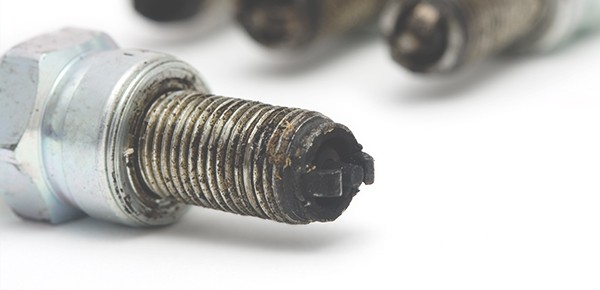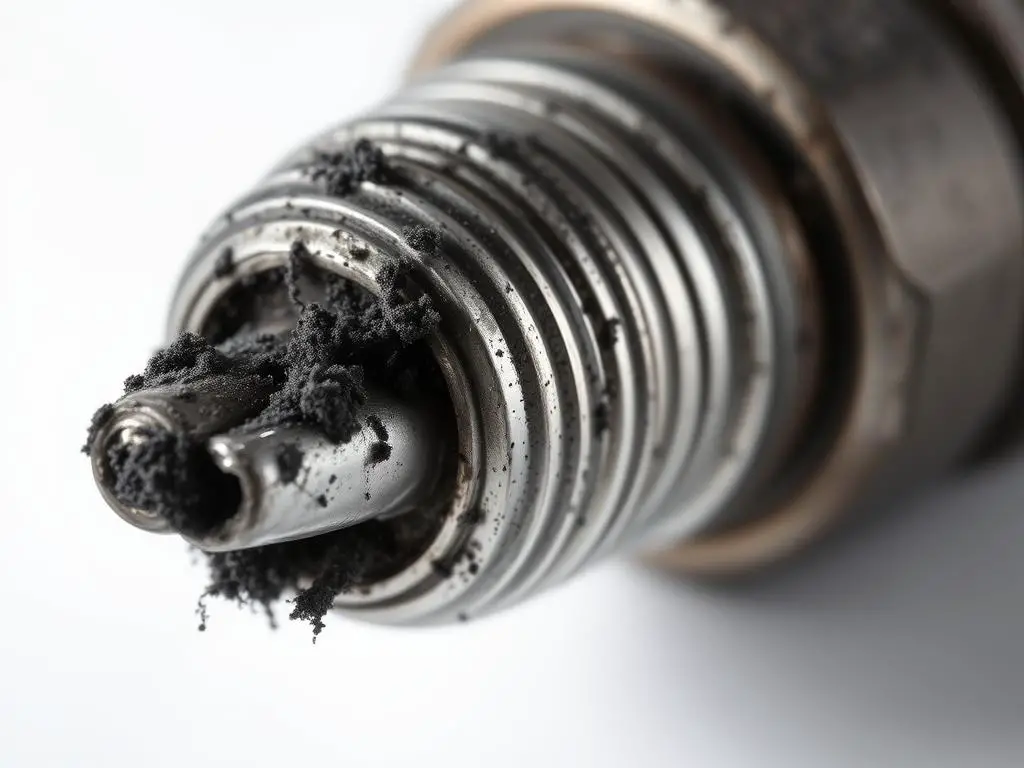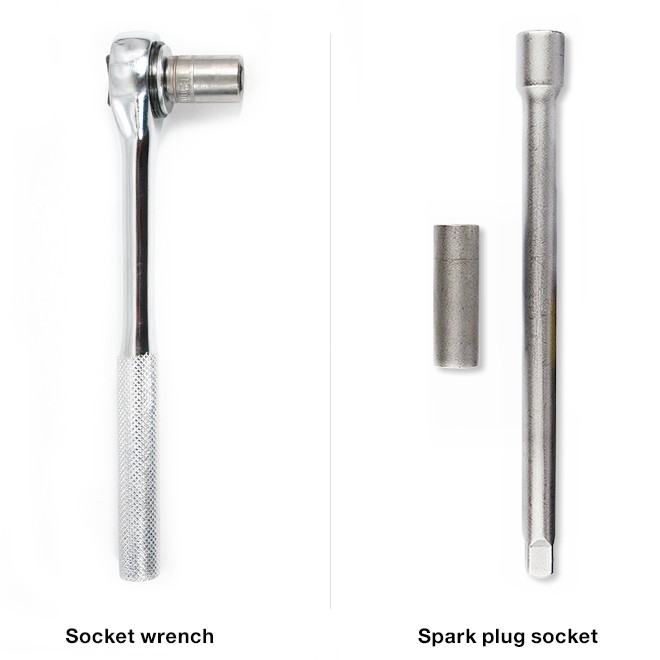When and How to Change Outboard Spark Plugs
- Understanding Marine Spark Plugs and Their Role in Outboard Engine Performance
- How Often to Inspect and Replace Marine Spark Plugs
- Common Spark Plug Problems and What They Mean for Your Engine
- Choosing the Right Spark Plugs for Your Boat
- Step-by-Step Guide to Replacing Marine Spark Plugs
- Tips for Maintaining Your Spark Plugs Longer
- Frequently Asked Questions About Marine Spark Plug Maintenance
- The Lasting Impact of Proper Spark Plug Maintenance
- About the Author
Understanding Marine Spark Plugs and Their Role in Outboard Engine Performance
I've spent countless hours working on outboard engines, and I can tell you that spark plugs are truly the unsung heroes of marine propulsion. These small components are absolutely critical for creating the precisely timed electrical spark that ignites the air-fuel mixture in your engine's cylinders. Without this spark, your boat simply becomes an expensive floating platform.
What makes marine spark plugs different from their automotive cousins is their specific design to withstand the unique challenges of boating environments. I've seen firsthand how moisture, salt, and constant vibration can quickly destroy standard automotive plugs. Marine-grade spark plugs use specialized materials and construction techniques to resist corrosion and maintain consistent performance even when subjected to the harsh realities of saltwater or freshwater boating.
The reliability of your spark plugs directly impacts everything from fuel efficiency to overall engine longevity. When I'm out on the water, I want absolute confidence that my engine will perform flawlessly—and that starts with properly maintained spark plugs.
How Often to Inspect and Replace Marine Spark Plugs
When I first started maintaining my own outboard engines, I was confused about the right intervals for spark plug replacement. After years of experience and consulting with manufacturers, I've found that the general consensus among marine mechanics is to inspect your spark plugs every 100 hours of engine use or at least once a year, whichever comes first.
Professional mechanic Pete from Pete's Garage offers more specific guidance: "You should be changing these out after the first 20 hours or the first month and then after that every 100 hours or every 6 months." I've followed this advice for years and found it prevents many common engine issues before they start.
My experience has shown that operating conditions significantly impact spark plug lifespan. If you frequently run in rough water or carry heavy loads, you might need to replace plugs sooner than the standard intervals. I once discovered severely fouled plugs after just 75 hours on my Mercury outboard because I had been running it at low speeds in shallow, silty waters for several weeks. Keeping your Mercury outboard motor parts in good condition helps prevent such issues.
Why Regular Inspection is Crucial for Engine Health
I learned a valuable lesson about spark plug inspection back in 2019 when my 200hp Yamaha started running rough. What seemed like a major problem turned out to be severely worn spark plugs that I had neglected to check. That's when I realized these regular inspections aren't just about the plugs themselves—they provide a window into your engine's overall condition.
Walker Smith, a contributor to Wired2Fish, explains this perfectly: "To inspect the old plugs, look for black, oily deposits which may indicate too much oil getting to the plug. White or gray coloration may indicate overheating. Any erosion or breaks in the insulator tip, ground (or side) electrode or center electrode are pretty easy to identify. These are clear indicators that it's time to change out the plugs."
I've found this diagnostic approach invaluable. Last summer, when examining my plugs during routine maintenance, I noticed a chalky white residue on several plugs. This prompted me to check my cooling system, where I discovered a partially blocked water intake. By addressing this issue early, I avoided potential overheating damage that would have cost thousands to repair. You can learn more about maintaining your boat's cooling system at JLM Marine's Cooling System collection.
The appearance of your spark plugs tells a detailed story about your engine's health:
- Light tan or grayish-brown: Healthy engine operation
- Dark, powdery black deposits: Rich fuel mixture or oil contamination
- Wet, oily fouling: Possible piston ring or valve seal issues
- White or chalky appearance: Overheating from incorrect timing, lean fuel mixture, or cooling problems
Ignoring these visual clues can lead to reduced performance, increased fuel consumption, and eventually serious engine damage like blown head gaskets or damaged pistons.
Common Spark Plug Problems and What They Mean for Your Engine
I've diagnosed countless engine issues that originated with spark plug problems. One particularly memorable case was when my fishing partner's outboard suddenly developed a rough idle and significant power loss mid-season. After pulling the plugs, I found heavy carbon deposits on three out of six plugs—a clear sign of an improper fuel mixture. Further investigation revealed a partially clogged fuel injector. For dealing with fuel-related issues, having the right carburetor parts or repair kits is essential.
Fouled spark plugs typically manifest in several ways:
- Rough idle: The engine sounds uneven or has a distinctive "miss" in its sound
- Engine misfires: You'll feel hesitation or stuttering when accelerating
- Hard starting: The engine cranks but takes longer than normal to fire up
- Power loss: Particularly noticeable at higher RPMs
But identifying the fouling is only half the battle. The real challenge is determining the root cause. Black carbon deposits generally indicate a rich fuel mixture (too much fuel, not enough air). This might stem from a clogged air filter, malfunctioning fuel injectors, or incorrect fuel pressure.
White, glazed appearances usually point to overheating from a lean mixture (too much air, not enough fuel). This could result from fuel delivery problems or air leaks in the intake system.
Oily fouling typically indicates internal engine issues like worn piston rings allowing oil to enter the combustion chamber. I once had this exact problem on my older Evinrude—the plugs kept fouling with oil, and eventually I had to rebuild the top end of the engine.
I cannot stress this enough: replacing plugs without addressing the underlying issue is pointless. When my friend's outboard showed those carbon deposits, we cleaned the fuel injectors and replaced the plugs. Had we simply replaced the plugs, the problem would have returned within hours of operation.
Choosing the Right Spark Plugs for Your Boat
This is absolutely non-negotiable: you must use marine-grade spark plugs specifically designed for your outboard engine. I made this mistake once in my early boating days—I was in a hurry, grabbed automotive plugs that "looked right," and paid for it with poor performance and premature failure.
Marine environments subject engines to challenges that automotive engines never face: constant moisture exposure, salt spray, and relentless vibration. Standard automotive plugs simply aren't built to withstand these conditions.
The most reliable source for finding the correct spark plugs is your owner's manual. I keep a digital copy on my phone for easy reference. Major manufacturers like Yamaha, Mercury, and Suzuki also provide this information on their websites. For my Mercury 150, I found the exact plug specifications on a sticker under the cowling—NGK BPZ8H-N-10 with a specific gap setting.
Speaking of NGK, they produce some of the best marine spark plugs available. Their marine-specific plugs use corrosion-resistant materials that stand up to saltwater exposure much better than standard plugs.
When in doubt, consult with a reputable marine parts supplier. At JLM Marine, we match your engine specifications to the exact plug you need. I've seen too many engines damaged by incorrect spark plugs to take chances with this critical component. Explore our full outboard motor parts selection to ensure you're getting the right components for your engine.
Step-by-Step Guide to Replacing Marine Spark Plugs
After replacing hundreds of spark plugs on various outboards, I've developed a systematic approach that ensures success. Here's my proven method:
Safety First: Disconnect the Battery
Always begin by disconnecting the negative terminal of your boat's battery. I learned this lesson the hard way back in 2018 when I accidentally shorted a spark plug wire against the engine block. The resulting electrical arc could have caused serious damage or injury. This simple step prevents accidental sparks or short circuits while you're working.
Prepare for Removal
With the battery disconnected, remove your engine cowl or cover. Once that's off, you'll see the spark plug wires or ignition coils connected to each plug. When removing these, always pull from the boot, not the wire itself. I damaged an expensive ignition wire on my Suzuki outboard by yanking on the wire instead of carefully removing the boot.
Tools Needed
Before starting, gather:
- A spark plug socket of the correct size (5/8 inch for most outboards, but verify with your manual)
- Socket extension (at least 6 inches for hard-to-reach plugs)
- Torque wrench (critical for proper installation)
- Dielectric grease
- Anti-seize compound (especially important for engines used in saltwater)
- Spark plug gap tool
Removing the Old Plugs
Place the spark plug socket firmly onto the plug. If a plug feels stuck, gently rock it back and forth to break it free. I once had a plug that seemed completely seized in my Yamaha F150. Rather than forcing it and risking thread damage, I applied a penetrating lubricant, waited 30 minutes, and then it came out easily.
As you remove each plug, examine its condition. In 2021, when servicing my fishing buddy's Mercury outboard, one plug had obvious electrode erosion while the others looked fine. This single damaged plug was causing a persistent misfire that had puzzled us for weeks.
Checking and Adjusting the Spark Plug Gap
According to manufacturer specifications from Mercury Marine, the gap between the center electrode and ground electrode on my outboard should be exactly 0.040 inches.
Use a spark plug gap tool to verify this measurement on your new plugs. If the gap is incorrect, carefully adjust it by bending the ground electrode. I've found that even pre-gapped plugs sometimes need fine-tuning. On my Evinrude, the specified gap is 0.032 inches, and even a difference of 0.005 inches can affect performance.
Correct Installation of New Spark Plugs
Cleanliness is absolutely essential. Before installation, I always verify that both the new plug threads and the engine's spark plug holes are completely clean. Any debris can prevent proper seating or damage threads.
For my outboards used in saltwater, I apply a small amount of anti-seize compound to the threads of each new plug. This prevents them from seizing in the cylinder head, which is particularly important in marine environments where corrosion is a constant threat.
Thread each new plug in by hand first. This is crucial to prevent cross-threading, which can destroy the threads in your cylinder head—a repair that could cost hundreds or even thousands of dollars. I never use a socket to start threading a spark plug.
Once the plug is hand-tight, use your torque wrench to tighten it to the manufacturer's specification. For my Mercury outboard, the manual specifies 18 ft-lbs. For my Yamaha, it's 17 ft-lbs. Never guess at this—improper torque can lead to damage or poor performance.
Final Securing and Checks
After installing all plugs, I apply a small dab of dielectric grease inside each spark plug boot before reconnecting it. This grease creates a moisture barrier that prevents corrosion and makes future removal easier. It also helps ensure a solid electrical connection.
Press each boot firmly onto its spark plug until you feel it seat completely. During a storm three years ago, I experienced an engine misfire that was traced to a boot that wasn't fully seated—a simple problem with a simple fix, but only if you know what to look for.
After reconnecting everything and reinstalling the engine cowl, reconnect the battery and run a quick test. Listen for any unusual sounds and check for smooth operation at various RPMs.
Tips for Maintaining Your Spark Plugs Longer
Through years of maintaining various outboards, I've developed several practices that help extend spark plug life:
Proper engine tuning is essential. In 2020, I noticed my Mercury was consuming spark plugs faster than normal. After a complete tune-up including fuel filter replacement and throttle body cleaning, plug life returned to normal. Maintaining the correct fuel-to-air mixture significantly reduces fouling rates. You can find reliable fuel filters and related parts at JLM Marine.
Keep your cooling system in perfect condition. In August 2022, I noticed white deposits on my spark plugs during a mid-season check. This prompted me to clean my cooling system's water intake screen, which had become partially clogged with weeds and silt. After cleaning, engine temperature dropped by 15 degrees, and the next set of plugs showed normal coloration after 50 hours of use.
Avoid extended idling whenever possible. During a fishing tournament in 2021, I observed many boats idling for hours while waiting for weigh-in. When I serviced several of these engines later, their plugs showed excessive carbon deposits compared to engines that were either running at proper speeds or shut down during waiting periods.
Use high-quality fuel and oil. I switched to premium fuel and synthetic oil in my four-stroke Yamaha and immediately noticed cleaner spark plugs at inspection intervals. The initial cost difference was more than offset by extended plug life and better overall engine performance.
Frequently Asked Questions About Marine Spark Plug Maintenance
How often should marine spark plugs be changed?
Based on manufacturer recommendations and my own experience with dozens of outboards, inspect your marine spark plugs every 100 hours of engine operation or annually, whichever comes first. Replace them around the 300-hour mark or sooner if they show signs of fouling or damage.
For new engines, I follow mechanic Pete's advice to change plugs after the first 20 hours, then every 100 hours or 6 months thereafter. This initial change helps identify any break-in issues that might affect long-term engine health.
What are the signs of a bad marine spark plug?
I've diagnosed countless bad spark plugs, and the signs are usually quite clear. You'll notice rough idling where the engine RPMs fluctuate erratically. Misfires or hesitation during acceleration are common, especially under load. Starting the engine becomes progressively more difficult, and fuel efficiency drops noticeably.
Visually, excessive carbon deposits, oil fouling, significant electrode wear, corrosion, or cracked insulators all indicate replacement is needed. Last summer, a client's outboard had been running poorly for weeks—I pulled the plugs and found one with a cracked insulator that was causing an intermittent misfire.
Can I use automotive spark plugs on my boat?
Absolutely not. I made this mistake once in an emergency situation and regretted it immediately. Marine spark plugs use specific materials and construction to withstand moisture, salt, and vibration. Automotive plugs lack these protective features and will quickly fail in a marine environment.
On a fishing trip in 2019, a fellow boater installed automotive plugs as a "temporary fix" when his marine plugs failed. Within four hours, his engine was misfiring badly, and by the next morning, the plugs were so corroded they had to be extracted with special tools, damaging the threads in the process.
How do I know if my spark plugs need cleaning or replacement?
Regular visual inspection is your best guide. In my experience maintaining multiple outboards over the years, healthy plugs have a light tan or grayish-brown color on the electrodes. If you see dark, sooty deposits, your engine is likely running rich. White or chalky deposits indicate overheating.
Any electrode erosion, damage to the insulator, or significant corrosion means immediate replacement is necessary. During a spring inspection of my Mercury 150 last year, I noticed one plug had significant electrode wear while the others looked fine. This single plug was causing an occasional misfire that I might have overlooked without a thorough inspection.
What tools do I need to replace marine spark plugs?
From my toolkit that I've assembled over 15 years of marine maintenance:
- A spark plug socket of the correct size (5/8 inch for most outboards)
- Socket extension (I prefer a 6-inch for better access)
- Torque wrench calibrated in foot-pounds
- Spark plug gap tool (feeler gauge type or the circular wire type)
- Dielectric grease for the plug boots
- Anti-seize compound for the threads (particularly important in saltwater environments)
- Clean rags for wiping and inspecting
This modest investment in proper tools has saved me countless hours of frustration and prevented damage to expensive engine components.
The Lasting Impact of Proper Spark Plug Maintenance
Throughout my years of boating and maintaining outboard engines, I've come to appreciate how these small components can have such a massive impact on reliability and performance. Regularly inspecting and replacing your spark plugs ensures your engine delivers consistent power and efficiency when you need it most.
The knowledge I've shared comes from real-world experience—both successes and failures. I've learned that proactive maintenance prevents the vast majority of on-water breakdowns. By understanding what your spark plugs are telling you about your engine's condition, you gain valuable insights that can help you address small issues before they become major problems.
When you're miles offshore or in an unfamiliar cove, engine reliability isn't just about convenience—it's about safety. Taking the time to properly maintain your spark plugs is one of the simplest yet most effective ways to ensure your outboard will get you home safely every time.
So next time you're preparing for the boating season or performing routine maintenance, give those spark plugs the attention they deserve. Your engine will reward you with reliable performance, and you'll enjoy more time actually boating instead of troubleshooting engine problems. For a full range of marine parts and accessories to keep your boat in peak condition, visit JLM Marine.
















Leave a comment
Please note, comments need to be approved before they are published.